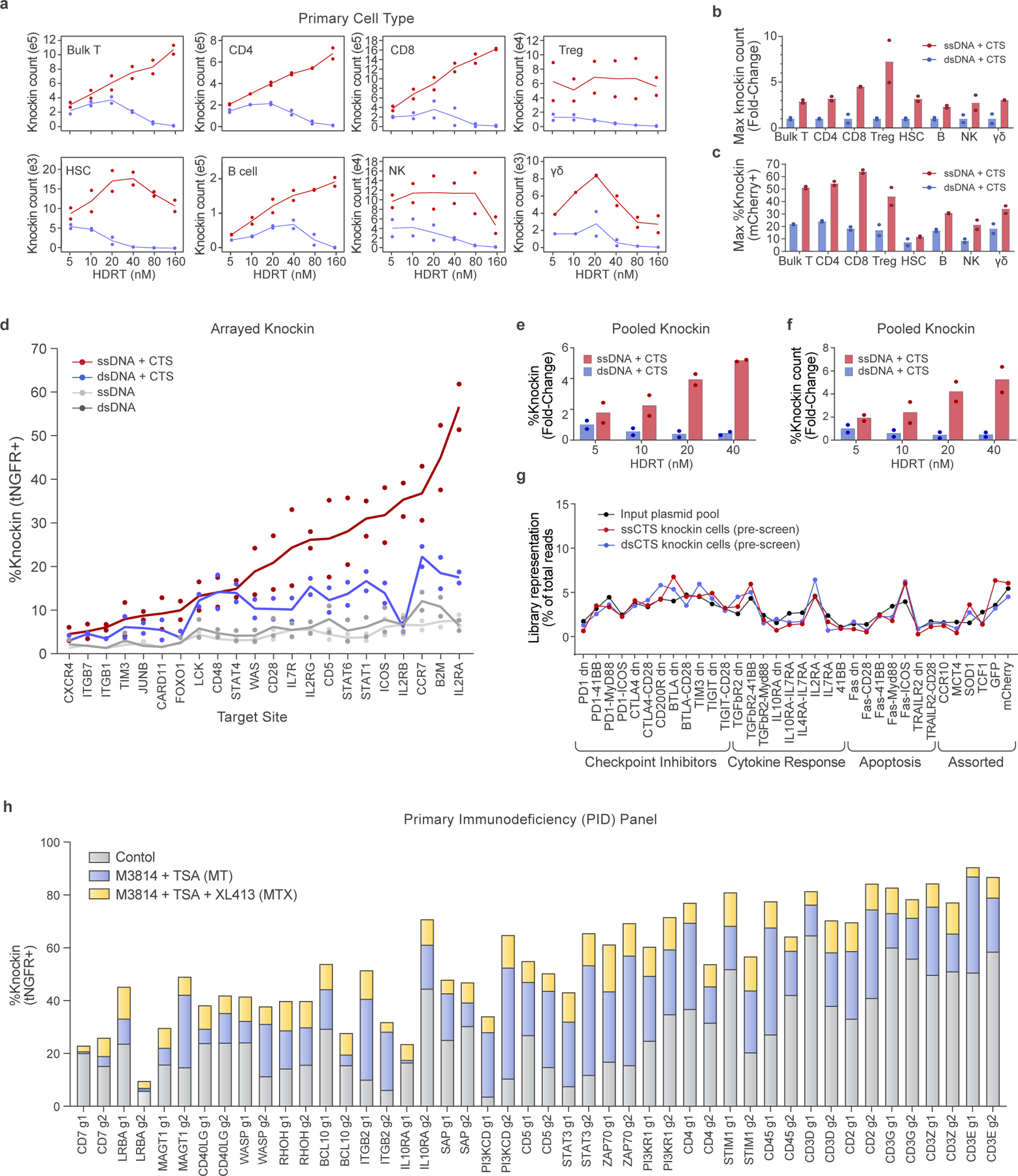Fig. 3 |. Application of ssCTS knock-in templates across diverse target loci, knock-in constructs and primary human hematopoietic cell types.

a–c, Comparison of knock-in cell yields using ssDNA (red) and dsDNA HDRTs (blue) with CTS sites across a variety of primary human hematopoietic cell types. Note that different cell type comparisons were performed with different blood donors. All comparisons were performed using a knock-in construct generating an CLTA-mCherry fusion at the CLTA locus. Shown for each cell type using HDRT concentrations from 5 to 160 nM are knock-in cell count yields (a), maximum fold-change in knock-in count yields (relative to dsCTS templates) (b) and maximum percentage knock-in (c). d, Knock-in efficiencies for constructs targeting a tNGFR marker to 22 different target genome loci. e–g, Comparison of large ssDNA and dsDNA HDRTs with CTS sites for knock-in of a pooled library of polycistronic constructs targeted to the TRAC locus (2.6–3.6 kb total size)18. Shown for each HDRT variation is relative percentage knock-in in comparison to maximum for dsDNA + CTS templates (e), relative knock-in cell count yields in comparison to maximum for dsDNA + CTS templates (f) and representation of each library member in knock-in cells postelectroporation in comparison to construct representation in the input plasmid pool (g). h, Evaluation of ssCTS templates ± MT or MTX inhibitor combinations with a panel of 44 different knock-in constructs targeting a tNGFR marker across 22 different target loci including genes implicated in PID or with potential importance for T cell engineering. Two gRNAs and corresponding ssCTS templates were used for each gene (g1 and g2). All experiments were performed with T cells from two independent healthy human blood donors represented by individual dots + mean (a–g) or mean alone (h). dsCTS, dsDNA HDRT + CTS sites.
